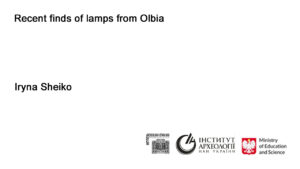
Iryna Sheiko lecture from the conference “Olbia in the Hunnic period”
26 października 2022
Zbyszekcoments closed
Na kanale Archeo.TV jest już dostępny 9 referat z konferencji "Olbia in Hunnic Period", która odbyła się 5-6 listopada 2021 roku ![]()
Institute of Archaeology and Ethnology of the Polish Academy of Sciences
and
Institute of Archaeology of the National Academy of Sciences of Ukraine
presents a lecture from a scientific conference:
Olbia in Hunnic Period
organized at November 5–6, 2021
Author: Iryna Sheiko
Title: Recent finds of lamps from Olbia
Abstract: Oil lamps, which are specifically shaped ceramic devices used to illuminate premises in the dark, are often used by researchers to suggest a date for other finds during the excavation of both settlement and funerary contexts. A developed typology and chronology of the lamps makes it possible on occasion to expand or, conversely, to narrow down an already existing and generally accepted chronological framework for specific ancient settlements. Thus, the more archaeological material is studied and circulated, the more likely it is that the dating of objects and sometimes settlements could change significantly.
This concerns the actual founding of Olbia Pontica as much as its decline. It should be noted that all the objects and pottery items found at the settlement were dated by the IV century AD. However, recent finds of imported ceramic lamps, from the 4th and even the beginning of the 5th centuries AD, have led to a reconsideration of the dates for the decline and ultimate fall of the settlement. It now seems that Olbia may have experienced a brief, but still a continuation after the 4th century AD. These recent lamp finds in the Olbian collection are dated from the middle of the 3rd to the beginning of the 5th centuries AD and can be referred to the latest period of the settlement existence. Most of these lamps are of imported origin, with complete parallels known from Syria, Palestine, Corinth, and the cities of the Bosporus.
The finds of late lamps in Olbia are an extremely important aspect of the study of the political and economic history of the city, prompting research into a little known period, for which there are few archaeological artifacts, and contributing new data to correlate with the overall picture of site development created by researchers so far.
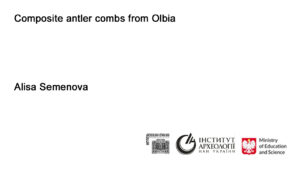
Alisa Semenova lecture from the conference “Olbia in the Hunnic period”
05 października 2022
Zbyszekcoments closed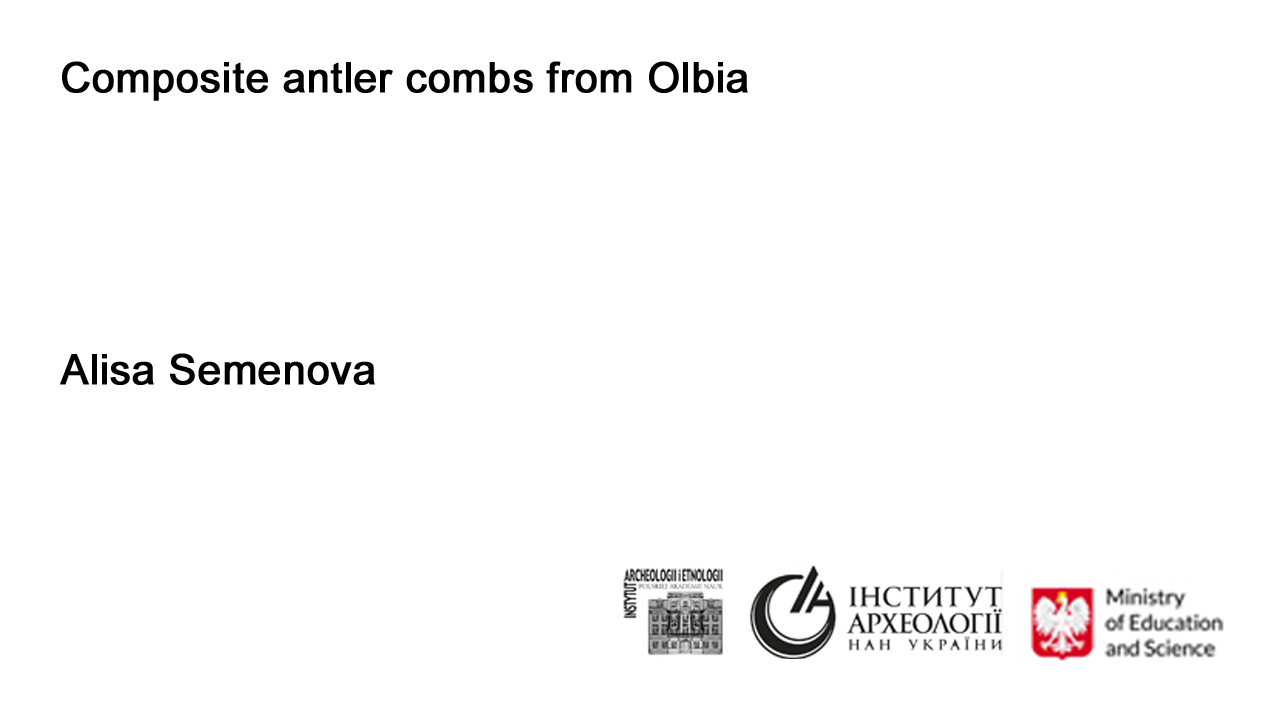
Na kanale Archeo.TV jest już dostępny 8 referat z konferencji "Olbia in Hunnic Period", która odbyła się 5-6 listopada 2021 roku ![]()
Institute of Archaeology and Ethnology of the Polish Academy of Sciences
and
Institute of Archaeology of the National Academy of Sciences of Ukraine
presents a lecture from a scientific conference:
Olbia in Hunnic Period
organized at November 5–6, 2021
Author: Alisa Semenova
Title: Composite antler combs from Olbia
Abstract: The paper concerns one-sided composite combs that are one of the categories of bone artefacts discovered at Olbia. Seven combs of the kind, made of antler and belonging in the Late Roman period, have been found in different sectors of the site. Two types were distinguished: the first being a single-sided three-partite comb with semicircular handle and the second a three-partite unilateral comb of bell-shape with semicircular handle. Composite combs have been studied extensively from the point of view of the typology, chronology and main stages of the production process. Based on their morphological characteristics, both types of combs can be described as “barbarian” forms of three-partite combs typical of the Chernyakhov−Sântana-de-Mureş Culture sites. Similar combs were also found in the other ancient cities of the North Black Sea region (Chersonesos and Panticapaeum among others). An analysis of bone artifacts, especially finds as interesting as these “barbarian” types of antler combs, could contribute to a greater understanding of the late Roman period in this territory.
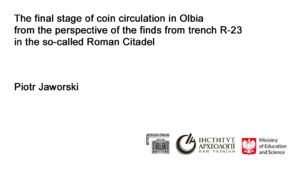
Piotr Jaworski lecture from the conference “Olbia in the Hunnic period”
12 września 2022
Zbyszekcoments closed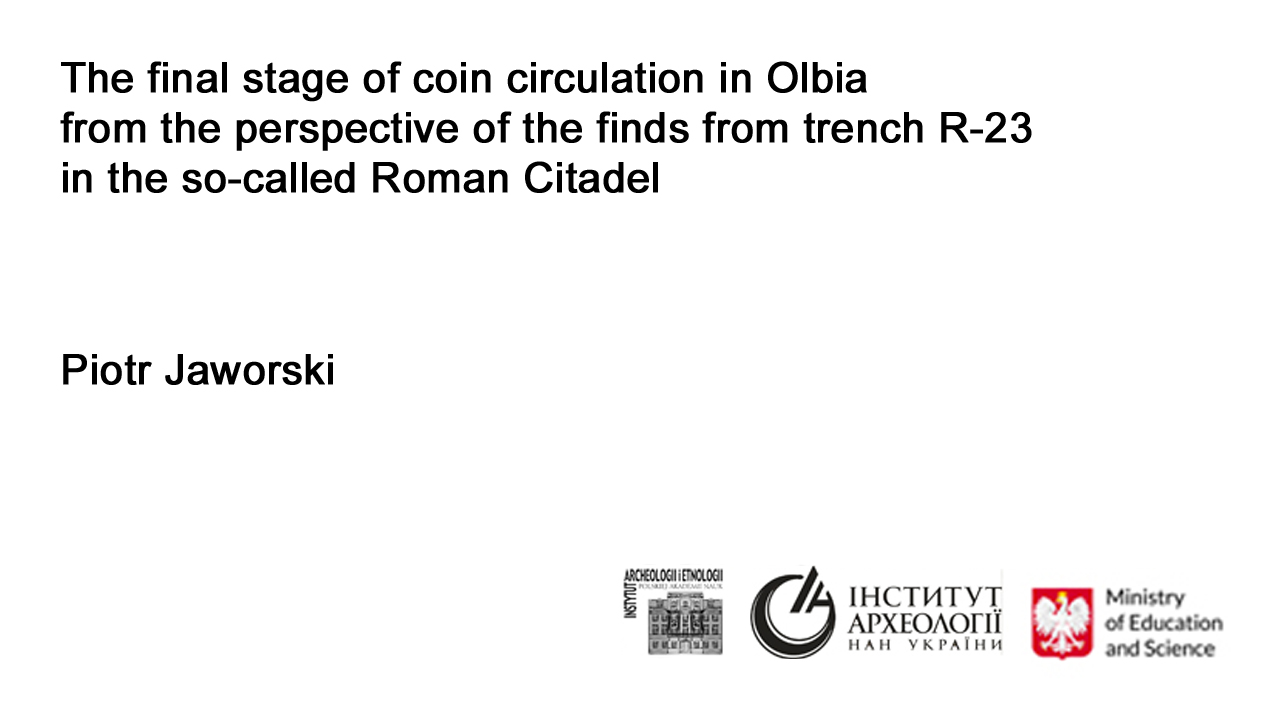
Na kanale Archeo.TV jest już dostępny 7 referat z konferencji "Olbia in Hunnic Period", która odbyła się 5-6 listopada 2021 roku ![]()
Institute of Archaeology and Ethnology of the Polish Academy of Sciences
and
Institute of Archaeology of the National Academy of Sciences of Ukraine
presents a lecture from a scientific conference:
Olbia in Hunnic Period
organized at November 5–6, 2021
Author: Piotr Jaworski
Title: The final stage of coin circulation in Olbia from the perspective of the finds from trench R-23 in the so-called Roman Citadel
Abstract: The coin of the youngest date discovered during archaeological research conducted in recent years in the so-called Roman citadel in Olbia, within trench R-23, appears to be a debased antoninianus of Valerian I dated to 253-254 AD. Interestingly, the last bronze coins of local provenance found at the site, often fragmented, are dated even earlier, to the times of the Severan dynasty. Is this tantamount with saying that the use of coins in Olbia ended with the Goth invasions?
The answer to this question lies in a study of the latest coin finds from trench R-23, based on the interpretation of a wider archaeological context formed by the remains of the settlement and production activity in the excavated area, which is dated to the 4th and the beginning of the 5th century.
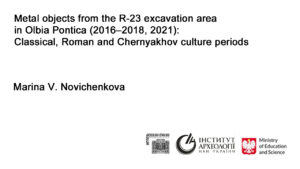
Maria V. Novichenkova lecture from the conference “Olbia in the Hunnic period”
07 września 2022
Zbyszekcoments closed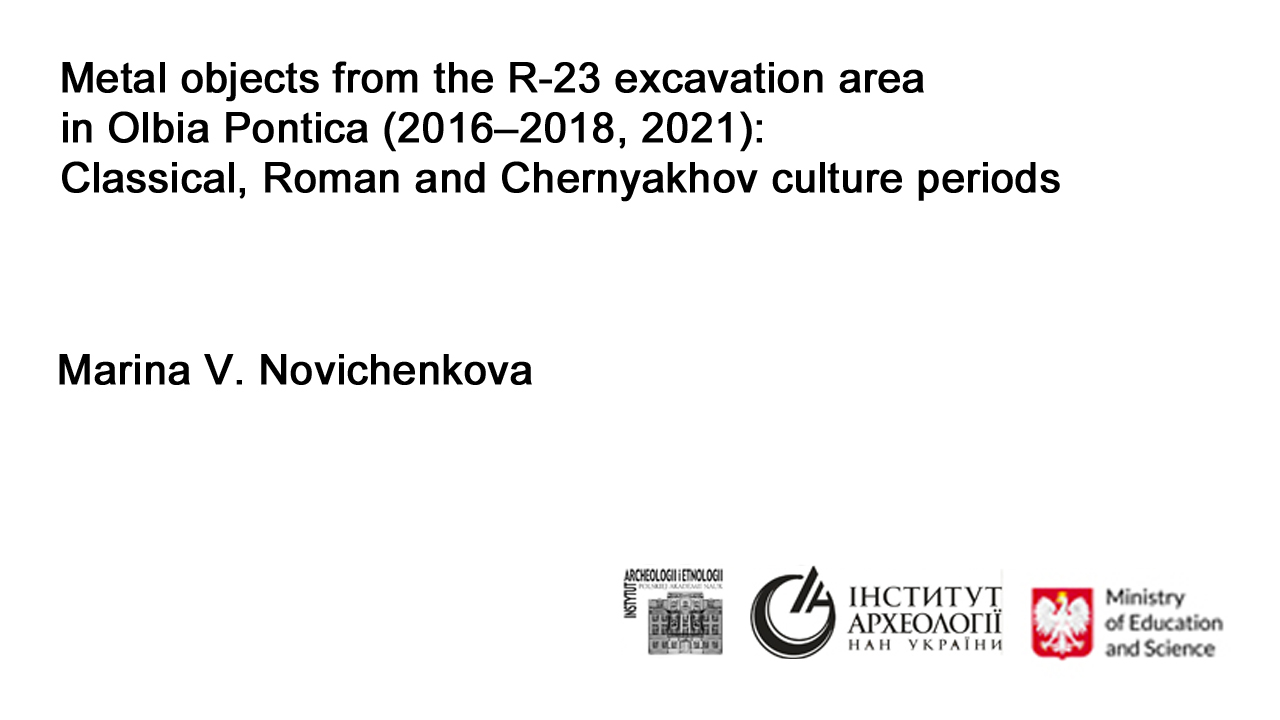

Współpraca z Berdyansk State Pedagogical University przy badaniach w Olbii
29 sierpnia 2022
Zbyszekcoments closed
Więcej o badaniach w Olbii możecie przeczytać TUTAJ
„Jesteśmy z wami! – Ми з Вами!”
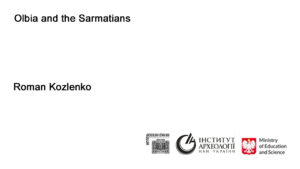
Roman O. Kozlenko lecture from the conference “Olbia in the Hunnic period”
22 sierpnia 2022
Zbyszekcoments closed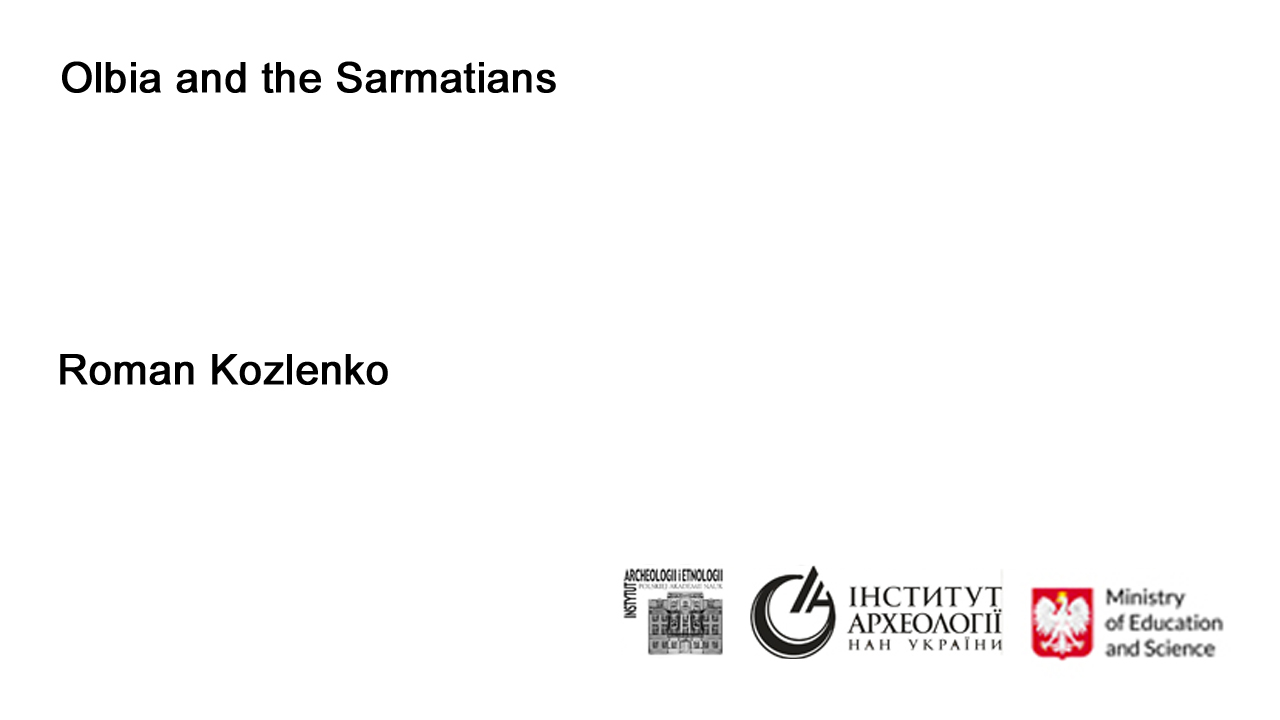
Institute of Archaeology and Ethnology of the Polish Academy of Sciences
and
Institute of Archaeology of the National Academy of Sciences of Ukraine
presents a lecture from the conference "Olbia in the Hunnic period"
The lecture is posted on the ArcheoTV channel on YouTube.
You can find it here
Author: Roman O. Kozlenko
Title: Olbia and the Sarmatians
Abstract:
During the most recent excavations in Olbia, a number of new tamga-shaped signs were found. Tamgas usually occur on pieces of limestone, bones, ceramics etc. Some of the signs have parallels in Scythian Naples, on a “plate-encyclopedia” from Panticapaeum, in the territory of Asian Sarmatia etc. A number of tamgas are detected for the first time for this region.The excavation in the Upper City of Olbia revealed a unique archaeological complex from the third quarter of the 1st century, with a rich assortment of amphora, red-slipped ware, glass, handmade pottery and Sarmatian weaponry belonging to an elite warrior, probably an equestrian archer, present in Olbia during a time of close military and political relations between Olbia, the Sarmatians and the Roman Empire. During this period, the Sarmatian kings Farzoy and Inismey minted in Olbia gold and silver coins with their generic tamga-sign, and the Olbian ambassadors met the Sarmatian kings (IOSPE I2, 51, 54).Tamgas in Olbia can be attributed to the second half of the 1st and the 2nd centuries AD. These signs appear on objects that are usually accompanied by arrowheads, bow parts, horse bridle elements, buckles etc. Bone arrowheads and quiver hooks have parallels in the Sarmatian burials of the Volga region, which can be associated with the Sarmatian nomads coming into the Northern Black Sea region from the Volga–Don River steppes in the middle or third quarter of the 1st century AD. The data testify to a direct Sarmatian presence in the city of the Roman period.
A series of bone plaques from the Roman period, some with images of a Parthian king, come from Eastern workshops. The object they decorated could have been brought to Olbia by the Sarmatians as suggested by tamga signs with parallels in the Don River basin and Ciscaucasia, native regions of the Alans, who participated in the raids on the Parthian kingdom, and whose burials include among the grave goods products of Eastern origin, especially carved bone plaques of Parthian production, that were imported to the region.
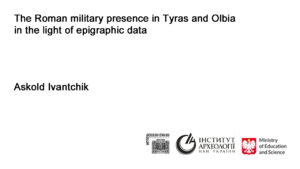
Askold Ivantchik lecture from the conference “Olbia in the Hunnic period”
08 sierpnia 2022
Zbyszekcoments closed
Institute of Archaeology and Ethnology of the Polish Academy of Sciences
and
Institute of Archaeology of the National Academy of Sciences of Ukraine
presents a lecture from the conference
"Olbia in the Hunnic period"
The lecture is posted on the ArcheoTV channel on YouTube.
You can find it here
Author:
Askold Ivantchik
Title:
The Roman military presence in Tyras and Olbia in the light of epigraphic data
Abstract:
After the destruction by the Getae in the middle of the 1st century BC, Olbia lay in ruins for a long time, and was restored with the help of Rome in the early years of the 1st century AD. In 56/57, Tyras was incorporated into the province of Moesia; Olbia had never been formally part of the Roman Empire, but was dependent on it. Both cities had Roman garrisons consisting of the same units of the Roman army; they were withdrawn simultaneously in the middle of the 3rd century AD. The paper will present epigraphic documents testifying to the presence of Roman troops in Tyras and Olbia and identify common features and differences in the situation connected with the Roman presence in both cities.

Oleg Saveliev lecture from the conference “Olbia in the Hunnic period”
02 sierpnia 2022
Zbyszekcoments closed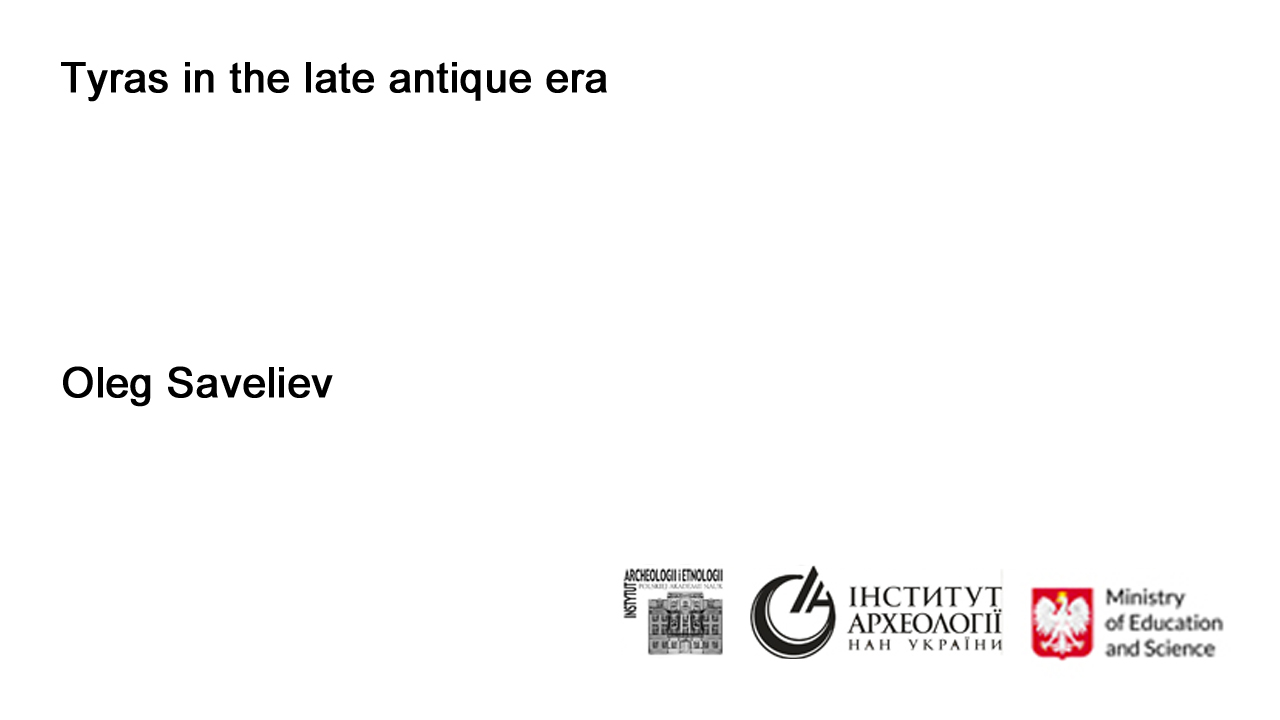
Institute of Archaeology and Ethnology of the Polish Academy of Sciences
and
Institute of Archaeology of the National Academy of Sciences of Ukraine
presents a lecture from the conference "Olbia in the Hunnic period"
The lecture is posted on the ArcheoTV channel on YouTube.
You can find it here
Author:
Oleg Saveliev
Title:
Tyras in the late antique era
Abstract:
After the tumultuous events of the middle of the 3rd century, associated with massive barbarian campaigns, life gradually returned to Tyras. The Goths, who were entrenched in the steppes of the northwestern Black Sea region, became the main military-political force here. At least some of the barbarians must have lived in the city. Despite the fact that Tyras continued to receive imported goods, the city was fully included in the orbit of the interests of a barbarian population. In general, this is a period of a slowdown in foreign economic relations, the number of imports declines, and the economy is reoriented to reflect the new conditions.
The material culture of Tyras of this period includes objects—ceramics, details of clothing, household items—that appear related to carriers of Chernyakhiv culture. Imports include goods from Heraclea of Pontus, Sinope, and the Bosporus. The ceramic assemblage contains some red-slipped tableware, as well as hand-made, associated with the barbarian tradition and Dacian gray-ware ceramics. Both “ribbed” lamps and local, hand-made replicas of late Greek lamps from different centers in Greece were in use. In addition to the Chernyakhiv and “military” brooches, local dress also made use of two-piece bow-shaped and T-shaped late Roman fibulae. Personal adornments included also glass beads of various types.

Marcin Matera lecture from the conference “Olbia in the Hunnic period”
02 sierpnia 2022
Zbyszekcoments closed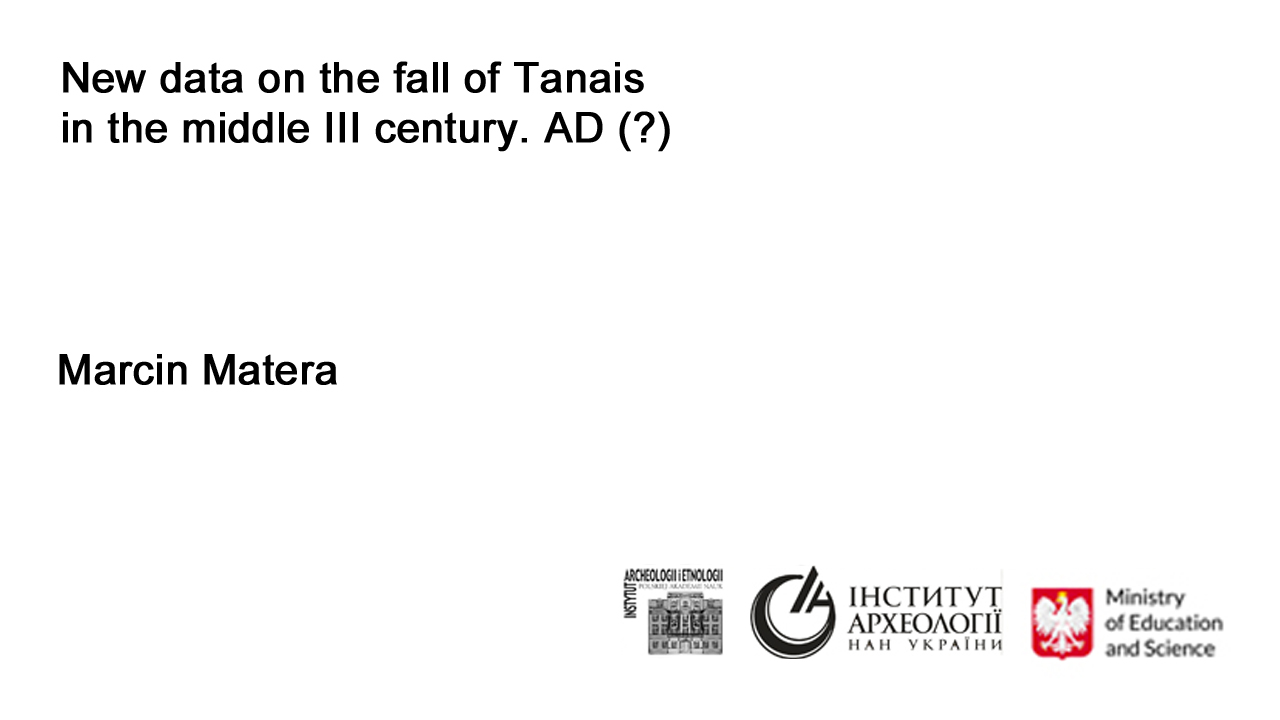
Institute of Archaeology and Ethnology of the Polish Academy of Sciences
and
Institute of Archaeology of the National Academy of Sciences of Ukraine
presents a lecture from conference "Olbia in the Hunnic period"
The lecture is posted on the ArcheoTV channel on YouTube.
You can find it here
Author:
Marcin Matera
Title:
New data on the death of Tanis in the middle (?) III century. AD
Abstract:
In 2018–2019 In the filling of the defensive ditch surrounding the western region of Tanais, a Polish detachment of the archaeological expedition of the Tanais Museum-Reserve discovered human remains. The unusual arrangement of the skeletons and the absence of a burial pit indicate that they were hardly a deliberate burial. The archaeological material found together with the skeleton is characteristic of the 2nd – 3rd centuries. AD, which is confirmed by similar finds from Late Sarmatian burials discovered in the Lower Don. Considering all these factors, the question arises whether these remains are the victim of one of the raids that destroyed Tanais in the middle of the 2ndII or in the middle of the 3rd century AD?
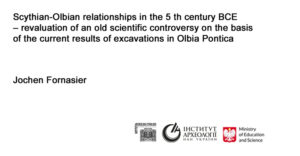
Jochen Fornasier lecture from the conference "Olbia in the Hunnic period"
14 lipca 2022
Zbyszekcoments closed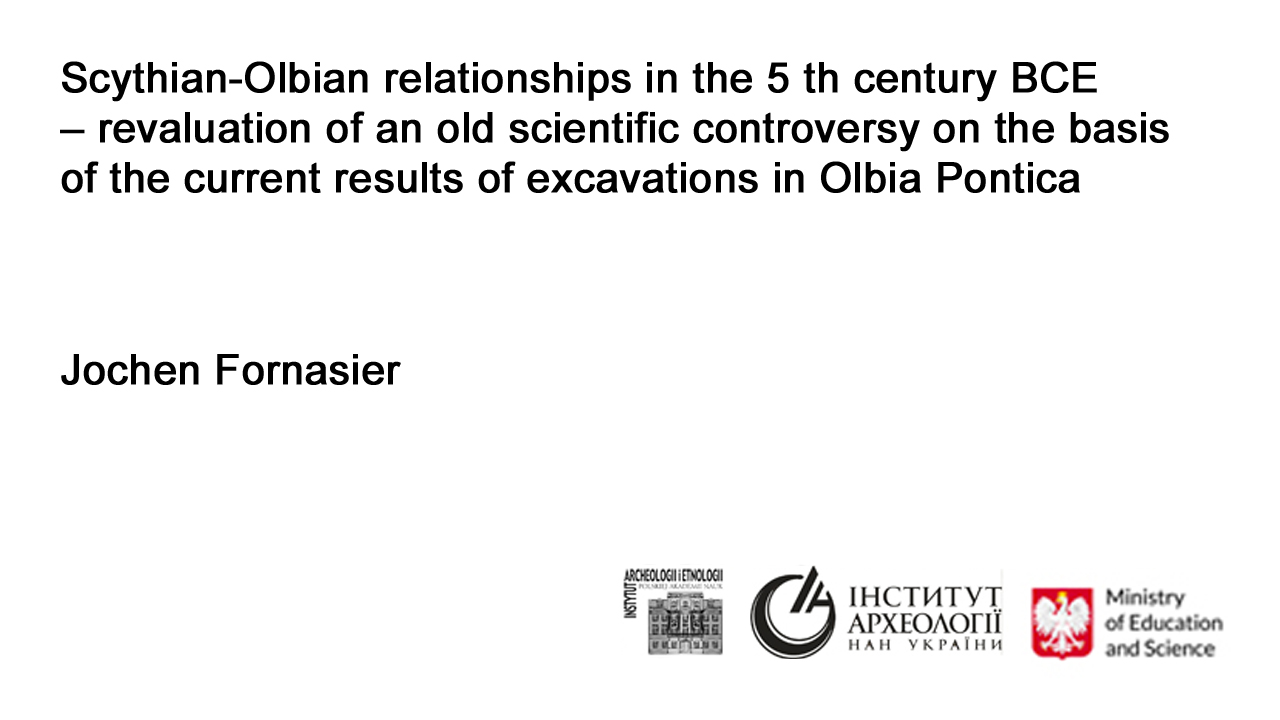
Institute of Archaeology and Ethnology of the Polish Academy of Sciences
and
Institute of Archaeology of the National Academy of Sciences of Ukraine
presents a lecture from conference "Olbia in the Hunnic period"
The lecture is posted on the ArcheoTV channel on YouTube.
You can find it here
Author:
Jochen Fornasier
Title:
Scythian-Olbian relationships in the 5th century BCE – revaluation of an old scientific controversy on the basis of the current results of excavations in Olbia Pontica
Abstract:
The relationships between Olbia Pontica and the Scythians in the 5th century BCE have frequently been the subject of scientific studies. However, it has never been possible to develop a commonly accepted reconstruction of the historic processes during the classical period. On the contrary – the two major theses contradict each other diametrically, despite the fact that they are based on the same ancient traditions and archaeological excavation results of the last decades. Thus, on the one hand, a Scythian protectorate over Olbia was postulated and thereby an immediate dependency of the Greek polis on the Scythian ruling class. On the other hand, and contradicting this opinion, there has been an emphasis on an initially peaceful character of the Greek-Scythian relations, which were marked by a culturally and economically profitable cooperation for a long period of time. Latest research results of a German-Ukrainian cooperation project in Olbia Pontica will in the future enable a validation of these theses. Thus, for example, Herodotus’ report of the Scythian king Skyles appears in a totally different light on the basis of the current archaeological findings from the suburbs of Olbia. Furthermore, the discovery of a Late Archaic fortification in the western part of the city, whose alleged absence has previously been voted in research as an essential argument for the peaceful relationship between the two „neighbours“, allows to revaluate the question of the urban development of Olbia in the Late Archaic–classical period. This lecture is supposed to introduce the current state of research and to demonstrate how severely it will change our perception of this Milesian colony in the 5th century BCE and therefore also of the Scythian-Olbian relationships.


